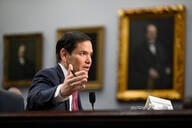You have /5 articles left.
Sign up for a free account or log in.
Faculty and staff are the heart of an institution. Colleges and universities have hundreds and sometimes thousands of employees who each day deliver on the institution’s brand promise to students and others. But have we truly invested in understanding and articulating our institution’s employer brand, with prospective and current employees in mind?
During my dissertation research on higher education multi-campus brand coherence, I studied a peer institution of my university. The qualitative data collection included one-on-one interviews with more than 20 senior administrators (starting with the president), whose areas of responsibility were closely connected to the university’s brand. Participants often asked who else I was meeting with and responded with surprise when I mentioned the vice president for human resources. “Oh, that’s interesting. Why would you want to meet with HR?”
A brand is what you stand for in the minds of the people you’re trying to reach, influence, and move to action, and that perception is shaped by every single experience a person has with your organization. An employer brand, then, is the perception of what it’s like to work for your institution among prospective and current faculty, staff, and administrators. As the competition to attract and retain top talent becomes fiercer, being more intentional about your employer brand is a strategic imperative. Here are three places to start:
Get close – or closer – with your central HR team.
Human resources and an institution’s brand should be inextricably linked. Partner in every possible way with HR and collectively identify opportunity areas, strategic and tactical. Where do prospective employees encounter the brand? Bring your expertise to the table to help articulate what it means to be a part of your institution and drive a more recruiting-oriented approach.
MIT and Ohio State, for example, go beyond the standard listing of job openings, showing why a prospective faculty or staff member should choose their organization and giving a sense of the culture that exists. Salesforce is an outstanding example outside of higher ed. The company’s careers website is just one mechanism for communicating its employer brand. Through the #SalesforceOhana hashtag (ohana means family), employees – the best source of authentic content – are sharing their experiences of working there.
At Indiana University, we’ve had a growing and rewarding partnership with university human resources over the past three years. We collaborated to discover how the university’s brand strategy could flex and come to life in relevant ways for HR’s specific audiences. We eventually built assets to deploy consistent messaging and materials across HR activities. As part of the process, our team developed personas describing how university human resources can interact with employees at specific points along their employee journey, beginning with the recruitment period.
Brand-building never ends, even with internal audiences.
While the brand strategy process should start from within, current employees are not necessarily the focus of the outcome. That is, brand strategy has external audiences in mind, such as prospective students. Don’t take internal audiences for granted. Internal communications should still reflect the brand strategy. Consider conducting market research to improve your internal communications. What are the reasons for reading (or not reading) those communications, and are there unmet needs? Additionally, find meaningful ways to keep faculty and staff engaged beyond the brand development process and brand launch. Even though the brand strategy has been in market, continue those important conversations of sharing progress and seeking feedback.
Be an advocate for employee engagement within your unit and on your campus.
Since we work in an environment of teaching and learning, we may assume that opportunities for employees to learn and develop happen naturally. Yet, higher ed compares unfavorably to many other sectors in this regard. According to Gallup, only four out of ten faculty and staff strongly agree that they have had opportunities at their institution to learn and grow over the past year.
An employer brand is not just about messaging; it’s based on the real, lived experiences of faculty and staff. And employee engagement contributes to student and institutional success. The Whole U at the University of Washington, now in its fifth year, is an excellent example of a comprehensive engagement program designed to help university employees thrive in their personal and professional lives.
Rob Zinkan is associate vice president, marketing, at Indiana University. In his 15 years there, he has also served as vice chancellor for external affairs and assistant dean for advancement at two different IU campuses.




